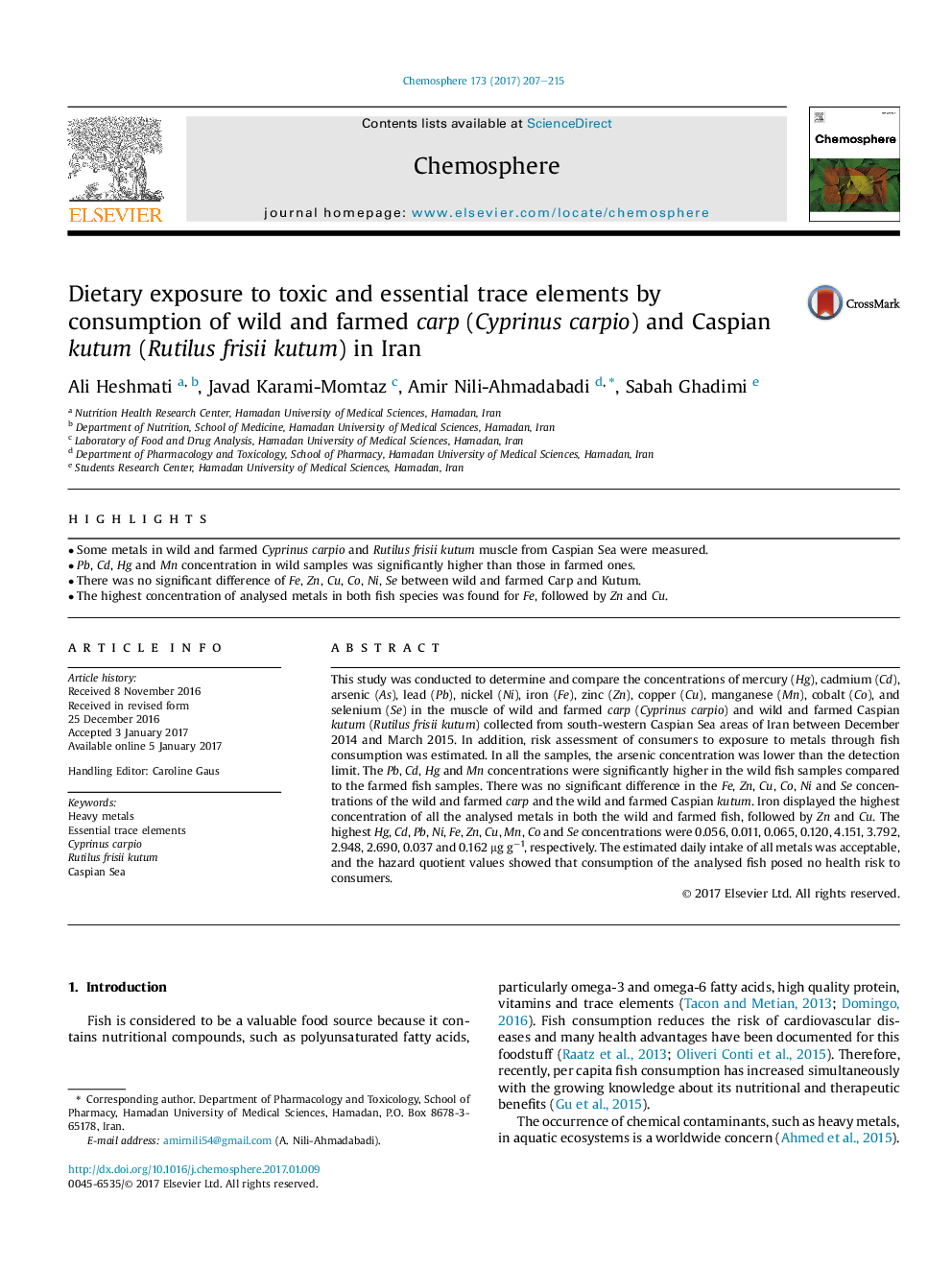| کد مقاله | کد نشریه | سال انتشار | مقاله انگلیسی | نسخه تمام متن |
|---|---|---|---|---|
| 5747395 | 1618798 | 2017 | 9 صفحه PDF | دانلود رایگان |

- Some metals in wild and farmed Cyprinus carpio and Rutilus frisii kutum muscle from Caspian Sea were measured.
- Pb, Cd, Hg and Mn concentration in wild samples was significantly higher than those in farmed ones.
- There was no significant difference of Fe, Zn, Cu, Co, Ni, Se between wild and farmed Carp and Kutum.
- The highest concentration of analysed metals in both fish species was found for Fe, followed by Zn and Cu.
This study was conducted to determine and compare the concentrations of mercury (Hg), cadmium (Cd), arsenic (As), lead (Pb), nickel (Ni), iron (Fe), zinc (Zn), copper (Cu), manganese (Mn), cobalt (Co), and selenium (Se) in the muscle of wild and farmed carp (Cyprinus carpio) and wild and farmed Caspian kutum (Rutilus frisii kutum) collected from south-western Caspian Sea areas of Iran between December 2014 and March 2015. In addition, risk assessment of consumers to exposure to metals through fish consumption was estimated. In all the samples, the arsenic concentration was lower than the detection limit. The Pb, Cd, Hg and Mn concentrations were significantly higher in the wild fish samples compared to the farmed fish samples. There was no significant difference in the Fe, Zn, Cu, Co, Ni and Se concentrations of the wild and farmed carp and the wild and farmed Caspian kutum. Iron displayed the highest concentration of all the analysed metals in both the wild and farmed fish, followed by Zn and Cu. The highest Hg, Cd, Pb, Ni, Fe, Zn, Cu, Mn, Co and Se concentrations were 0.056, 0.011, 0.065, 0.120, 4.151, 3.792, 2.948, 2.690, 0.037 and 0.162 μg gâ1, respectively. The estimated daily intake of all metals was acceptable, and the hazard quotient values showed that consumption of the analysed fish posed no health risk to consumers.
Journal: Chemosphere - Volume 173, April 2017, Pages 207-215